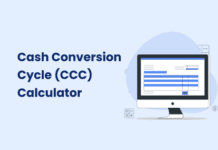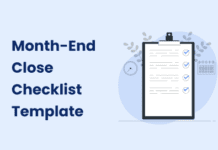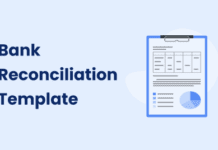Welcome to the financial backbone of every business – invoice!
Whether you’re a seller trying to get paid on time or a buyer wanting to keep track of expenses, invoices are key to making business transactions run smoothly.
In this blog, we’ll explain what an invoice is, why it’s important, and share tips on how to improve the invoicing process. Let’s dive into the details and uncover how invoices can make financial transactions easier.
What is an Invoice?
An invoice is a document issued by a seller to a buyer, detailing the products or services provided and the agreed-upon prices. It serves as a formal request for payment and includes essential information such as the quantity and description of items, unit prices, total costs, payment terms, and the due date. In other words, an invoice is a vital financial tool that facilitates transparent transactions between businesses by providing a clear sale record and outlining the buyer’s financial obligations.
What Is an Invoice Used For?
Invoices are important documents in business accounting. They help businesses keep track of sales made to clients. Here are some ways invoices are used:
- To ask clients for payment on time
- To record sales transactions
- To manage inventory for businesses that sell products
- To predict future sales based on past data
- To report business income for tax purposes
Importance of Invoice in Bussiness Processes
Invoices aren’t just paperwork; they play a key role in keeping a business running smoothly, staying financially healthy, and growing in the long term. Knowing why invoices matter and how to use them properly can greatly improve how a business operates. Let’s break down why invoices are important in different areas of business:
Maintaining Records
Invoices are proof of business transactions, helping to keep financial records accurate and organized. This is important for audits, analyzing the business, and ensuring financial transparency.
Payment Tracking
Invoices are formal payment requests. They show the amount owed, payment terms, and due dates, making it easier to track and manage payments. This helps reduce delays in getting paid.
Tracking Sales
Invoices are important for keeping track of sales and knowing how much money the business is making. They show all the details of each sale, like what was sold, how much was bought, and the price, making it easy to analyze sales.
Legal Protection
Invoices are legal documents that create a contract between the buyer and seller. If there are payment problems or legal issues, invoices can be used as proof to protect both sides.
Easy Tax Filing
Properly documented and detailed invoices simplify the tax filing process for businesses. They provide the necessary information for calculating taxes, claiming deductions, and ensuring compliance with tax regulations.
Business Analytics
Analyzing invoicing data can provide useful insights into a business’s financial health. This data helps evaluate performance, spot trends, and make better business decisions.
Inventory Management
Invoices help businesses manage inventory better by showing what products have been sold. This information helps them keep track of stock levels, know when to reorder, and make sure they have the right amount of products to meet customer needs.
Forecasting Future Cash Flow
By examining invoicing patterns and payment histories, businesses can forecast future cash flow. This foresight is essential for planning and making informed decisions regarding investments, expansions, or mitigating financial challenges.
Types of Invoices
Understanding these types of invoices is important for businesses because it helps them pick the right invoicing method based on their transaction type or the industry they work in. Here’s a simple look at some common types:
Pro Forma Invoice: A preliminary invoice sent to the buyer before the actual delivery of goods or services. The pro forma invoice outlines the terms of the sale and provides an estimate of costs.
Commercial Invoice: A commercial invoice is a standard document used in international trade. It includes information about the goods or services sold, such as item details, unit prices, and total costs. Commercial invoices are important for clearing customs and meeting legal requirements.
Credit Notes: Issued by the seller to the buyer, indicating a reduction in the amount owed. They are used to correct errors, apply discounts, or handle returns.
Timesheet Invoice: Common in service-based industries, timesheet invoices detail the hours worked by individuals or teams along with applicable rates. It’s often used for billing clients based on hourly work.
Recurring Invoices: For subscription-based services or ongoing contracts, invoices are automatically created at regular intervals. This is typical for services like software subscriptions or memberships.
Interim Invoice: A progress or milestone invoice, issued during a long-term project. They represent partial payments for completed stages or milestones.
Past-Due Invoice: Sent to the buyer when the payment is overdue. It serves as a reminder and typically includes details about late fees or interest charges.
Format of an Invoice
Now that we understand the importance of creating an invoice, let’s take a look at its components for effective invoice creation. Here’s a sample invoice:
Here are 13 essential components of an effective invoice:
1. A header with your business name, logo, and contact information.
2. A unique invoice number for each invoice for tracking and reference purposes.
3. The date when the invoice is issued.
4. The due date for payment.
5. The PO number against which the invoice is generated.
6. The customer’s name, address, and contact details.
7. The shipping address and related details.
8. A detailed breakdown of the goods or services provided, including quantity, unit price, and total cost for each item.
9. The payment terms, such as the accepted payment methods, any early payment discounts, and any late fees or interest charges for overdue payments.
10. The total amount due for the goods or services provided
11. Any taxes included in the total amount. Specify the tax rate and provide a separate breakdown if necessary.
12. The details of how the customer should make the payment, including bank account details or other relevant information.
13. Any additional terms or notes that are relevant to the transaction. This might include details about returns, warranties, or other important information.
Access more such ready-to-use professional invoice templates for free here.
Invoice Template
Invoice Tracking Template
To gain a more comprehensive understanding of how to create professional invoices that get you paid on time: Click here
What is Electronic Invoicing Software?
Electronic invoicing software or e-invoicing software makes it easy for businesses to create, send, and track invoices. With features like automatic calculations, customizable templates, and online payment options, it saves time and reduces errors.
Users can quickly generate invoices with just a few clicks and send them directly to clients via email. This software also helps businesses keep track of payments, send reminders for overdue invoices, and generate reports to see how much money is coming in.
Features of Electronic Invoice Software
- Personalize Your Invoices
You can fully control how your invoices look. Choose a pre-made template from a selection and customize it to match your brand. - Streamline Your Workflows
Let the software handle your invoices for you. It can automate repetitive tasks like sending invoices and payment reminders. - Ensure Secure and Convenient Payments
Invoice software keeps your payments safe by following strict security rules. You can also set it up to collect payments automatically on a regular schedule. - Enhance Customer Relationships
Good invoicing software can boost your relationships with customers. It often includes customer support features and a portal where customers can track their payments and transactions.
Benefits of Using Invoice Software
Invoice software makes your accounting and financial tasks easier by automating important activities. This can help you:
- Cut Costs: Reduce the number of staff needed in billing and invoicing.
- Save Time: Spend less time following up on late payments.
- Improve Cash Flow: Get paid faster by speeding up invoice payments.
- Reduce Fraud: Increase security and lower the risk of fraud.
- Enhance Customer Relations: Offer quicker solutions to any issues that arise.
Tips to Optimize Your Invoice Strategy
Let’s discuss a few tips to optimize your invoicing strategy.
- Ensure clear and concise descriptions of products or services to avoid confusion.
- Clearly state payment terms, including due dates and any incentives or late fees.
- Opt for a professionally formatted invoice with consistent branding for a polished look.
- Choose the right e-invoicing tool to automate processes, reduce errors, and enhance efficiency.
- Implement a systematic approach to follow up on overdue payments, maintaining positive communication.
By following these invoicing best practices, you’ll be more efficient when it comes to requesting payment, helping your business to thrive like never before. Moreover, by adapting an e-invoicing solution like Peakflo’s AR Automation, you can forge strong customer relationships and elevate your business reputation.
FAQ
An invoice ID is a unique number assigned to each invoice. It helps keep track of invoices and makes it easier to find specific transactions in your records.
To assign invoice numbers, start with a simple sequence, like 001, 002, and so on. You can also include letters or dates for better organization, but make sure each number is unique.
To invoice clients, create a document that includes your business details, client information, a list of services or products provided, the total amount due, and payment terms. Then, send it to your client via email or a delivery method they prefer.











































